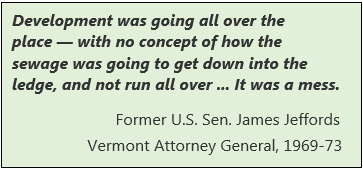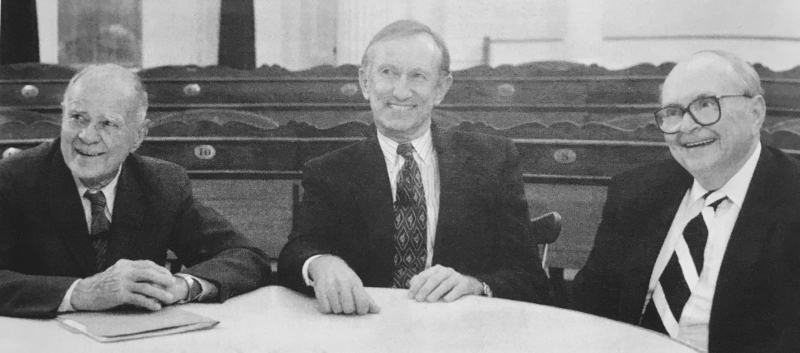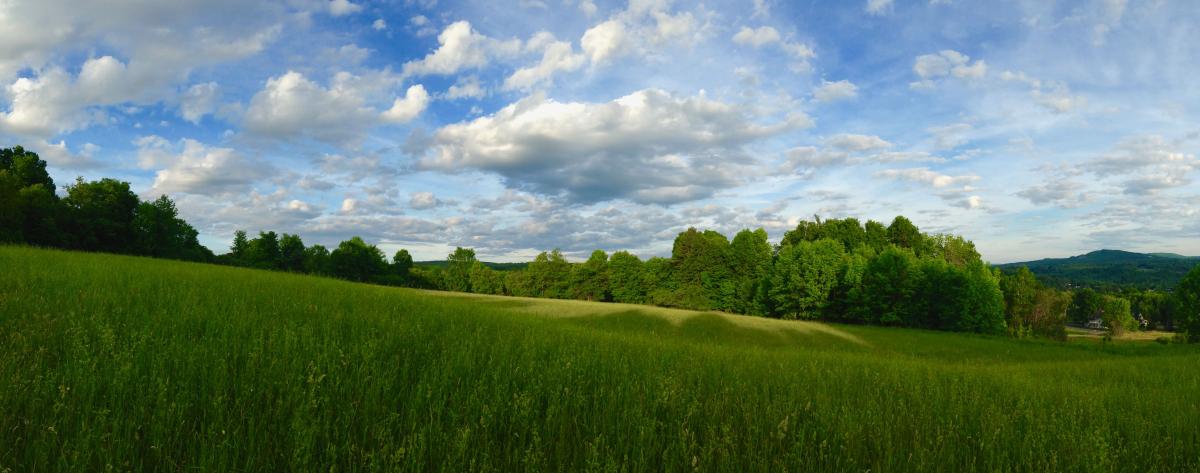The late 1960s brought sudden and dramatic change to Vermont’s quiet countryside. In population and developed areas, the state had hardly grown since the start of the 20th century. Now, almost all at once, new permanent and part-time residents began flooding in.


After holding well-attended hearings throughout the state, in January 1970 the Gibb Commission recommended a number of environmental laws, chief among them a new state system for reviewing and controlling plans for large-scale and environmentally sensitive development. Gov. Davis insisted that this system not be centered in Montpelier — that the power to review projects and grant permits be vested more locally, in a group of regional commissions.
In spring 1970, the Vermont Legislature passed the Land Use and Development Law, since known simply as Act 250. It created nine District Environmental Commissions, whose members were (and still are) laypersons, not government officials. Their decision-making process, supported by a modest staff, would center on 10 criteria for reviewing development and subdivision plans that would involve significant environmental, aesthetic, and/or community impacts. This review of development by local Vermont citizens has, with the 10 criteria, been the center of the Act 250 process ever since.

In 1995 Art Gibb, Jim Jeffords, and Al Moulton discuss their roles in the passage of Act 250, 25 years earlier.
Act 250 also established the Vermont Environmental Board to review appeals of District Commission rulings. Its original members included a natural-science professor, an architect, a realtor, a community leader and homemaker, a county extension agent, a ski area operator, an engineer,a businessman, and a county sheriff. This lay board heard District Commission appeals for 35 years, until the general appeal function was transferred to the Environmental Court in February 2005.
 The District Commissions are the focal point of the Act 250 process. While the number of applications in the early years of the law were modest, the District Commissions today receive approximately 450 applications per year — and they approve more than 98 percent. Many plans are modified during the application process, and District Commissions generally attach conditions to land-use permits, to make sure that the Act 250 criteria are satisfied.
The District Commissions are the focal point of the Act 250 process. While the number of applications in the early years of the law were modest, the District Commissions today receive approximately 450 applications per year — and they approve more than 98 percent. Many plans are modified during the application process, and District Commissions generally attach conditions to land-use permits, to make sure that the Act 250 criteria are satisfied.
The 10 criteria of Act 250 have changed little since the passage of the law, however several criteria have been modified in recent years. In 2006 Criterion 9(B) was modified to incorporate a process for mitigation of impacts to primary agricultural soils. In 2014 Criterion 5 was amended to include a requirement for transportation impact fees and Criterion 9(L) was amended to address strip develelopment. With each of these changes the updated criteria incorporated incentives to guide new development into Vermont's downtowns, villages, and other "designated centers."
The organizational structure has also been modified over time. In 2004 the Environmental Board and Water Resources Board were combined into a single entity, the Natural Resources Board. As part of the 2004 amendments, all appeals of District Commission decisions, as well as permit decisions of the Agency of Natural Resources, are now heard by the Superior Court, Environmental Division.
Because of the Act 250 process, the quality of development in Vermont is generally higher than in states without comprehensive land use laws. Act 250 was designed to achieve a balance between economic development and the legitimate interests of citizens, municipalities, and state agencies in protecting the environment. Innovative and bold at its inception, Act 250 is now part of the fabric of Vermont.

